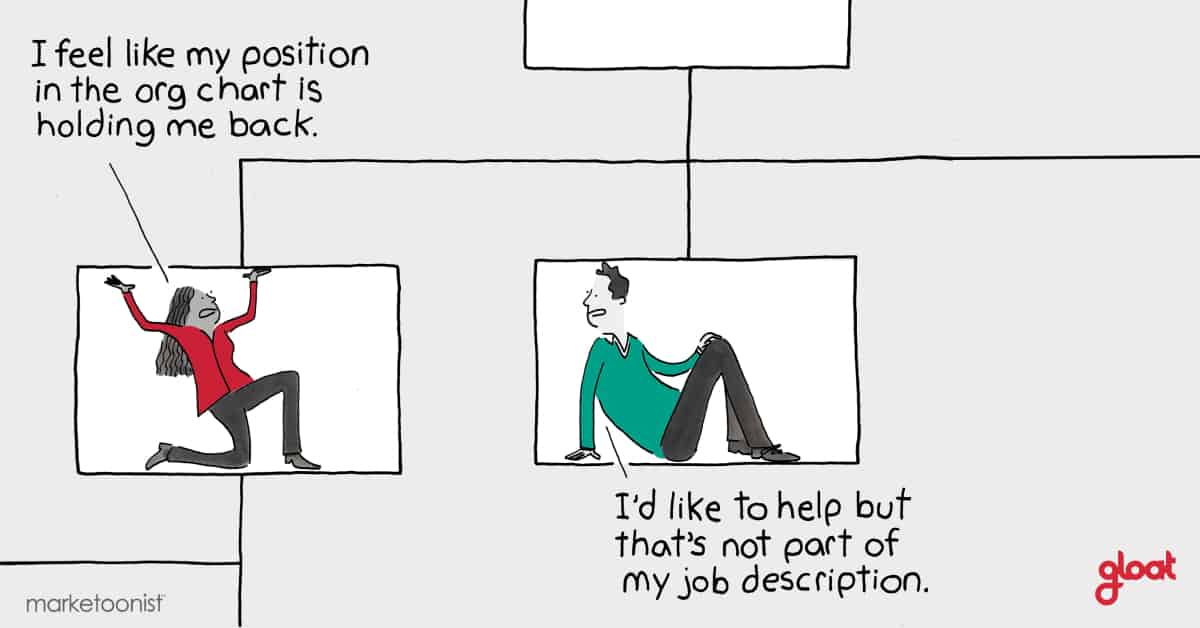The future of work means part-time projects in the workplace
Why and how introducing part-time projects to your full-time employees expands capacity, develops people, and increases engagement.

More than half of American millennials have a side gig outside of their day job, commonly known as a side hustle. Side hustles can be anything from selling products online to driving for a ridesharing app. I repeat: more than half of the largest generation in the American workforce is voluntarily choosing to take on more work, so much so that they are finding ways to do so outside of their current place of employment.
Moreover, a Deloitte report found that 62% of working Gen Zers said they would consider joining the gig economy to supplement full-time employment. These side gigs help supplement income and explore whether an idea, product, or service is viable, but beyond that, Diane Mulcahy, author of “The Gig Economy” explains: “they might want to gain another skill or expand their network.”
“The emergence of the gig economy is a seismic shift in the world of work on par with the advent of the assembly line, or even the weekend,” Harley Finkelstein writes in Forbes. The gig economy, side hustles, and the desire for skill diversification are here to stay.
What do side hustles have to do with your enterprise? The up and coming workforce is more than willing to expand their horizons by taking on extra work so don’t miss the opportunity to harness this drive within the company with part-time project initiatives.
Unlock capacity with in-house side hustles
Most companies are built on the structure of one person one role. Traditionally each individual has their set responsibilities and while that might work just fine for some companies, who wants to work just fine? I know I want to work extraordinarily both as an individual and as a company.
Millennials are now the largest generation in the workforce, with Generation Z following close behind. It’s time for companies to truly harness their power. The Deloitte Millennial Survey found that 48% of Millennials and 44% of Gen Z’s ranked ‘opportunities for continuing learning’ as a very important component when choosing whether to work for an organization or not, with 75% of Gen Z’s interested in holding multiple roles within their company. There is no doubt that the new workforce of today craves learning and diversity of experiences – here’s how to provide it.
A quick look at part-time project benefits for enterprises
- Increases agility at work
- Develops professionals – closing the skills gap
- Saves costs on external consultants & freelancers
- Increases capacity & productivity
- Work functionally
- Forms meaningful bonds between departments
Part-time projects promote sustainable yet limitless career growth
Additional part-time projects wouldn’t just add to employees’ workloads, but rather diversify their skills and experiences to provide the kind of professional growth it used to take years to amass.
Short-term projects keep work interesting and fight boredom and burnout. All of these benefits are just from adding a project of an additional 5 to 10 hours each week. Most employees spend half of that time each week just chatting by the watercooler, making dinner reservations, and scrolling through Instagram.
Part-time projects empower people to develop themselves and meet their career ambitions faster while preparing themselves for the future of work, in which a diversity of skills and experiences is paramount. Programs for part-time projects within organizations take the gig economy inside your company, while future-proofing your team.
Zooming out to the big picture, part-time projects increases talent agility. Diverse projects maximize workforce potential while unearthing new ways to apply existing talent in a way that makes people happy. When your team is satisfied, productivity grows and employees actually stick around.
The World Economic Forum projects that “35% of the skills demanded for jobs across all industries will change by 2020.” The need to diversify your skill set and close the skills gap has never been greater. Both individuals and companies should be striving to prepare themselves for the future and there is no better way than gaining new skills and experiences on the job already at your place of work.
Diversifying work improves output and quality while cutting costs
Encouraging employees to work on part-time projects sparks creativity and allows people to explore their interests beyond their main role. Job satisfaction increases significantly with creativity and diversity, which boosts employee retention. Others looking for experts to weigh in on their current projects can connect seamlessly to specialists and enthusiastic learners across your organization. Effectively, the quality of work will improve and the diverse eyes on the project will only add as projects worked on by diverse teams have better results. The benefit here is not only to individuals who will develop themselves professionally in new horizontal matrices, but also to companies.
Companies gain already onboarded highly knowledgeable minds working on new initiatives with no additional cost. With this approach existing employees often replace the need to hire external consultants, freelancers, or new hires while increasing teams’ capacity and productivity.
Working cross-functionally, employees also get to know other departments and diverse teams often across borders. Large companies should take advantage of the technology enabling their multinational operations to interact and grow and learn from one another.
Part-time project programs save companies millions, literally
Companies will be able to increase the capacity of each of their workers at a level that will simply amaze. Don’t believe me? Let’s talk numbers.
One large enterprise invested in this initiative by encouraging their employees to spend 5 to 10 weekly hours on projects ranging from a quick gig to six months. Managers were motivated to guide their employees as part of their career development conversations to seek out these part-time projects in addition to their regular roles, allocating a maximum of 20% of their capacity, specifically to enhance their desired skills and get to know other departments.
They used an AI-based two sided talent marketplace in which employees are suggested highly personalized project opportunities based on their skills, experiences, interests, and ambitions. Simultaneously, managers post projects or gigs and immediately get access to existing talent across the company and start working immediately. This is absolutely unprecedented visibility and speed. People connect to opportunities previously out of reach on both sides of the equation.
With only 15% of their employees working on part-time projects for 10 hours each week, a company of twenty thousand employees will enjoy 1,440,000 unlocked hours annually, equal to $45 million in savings. There is incredible potential here to save millions while investing in your staff and discovering their hidden talent and capacity.
In addition to the obvious benefits of having a happier, more productive workforce, part-time project opportunities allow individuals to choose what’s on their plate, which helps keep these happy motivated players on your team. This saves millions avoiding the lengthy and often unsuccessful process of hiring and training new people.
In some cases entire full-time positions could be covered by employees already at your company who each take on specific aspects of the opening, filling the role internally without losing an existing player or their main role.
Investing in the happiness, development, and productivity of employees has become a business imperative. According to recent research, companies that place a priority on employee development earn a median revenue of $161,100 per employee while companies that don’t make about half that amount, $82,800.
The findings are absolutely clear – those who are committed to empowering their employees reap great business rewards. Part-time projects programs are a cost-effective way to invest in your people, keep them on your side doing their best work, and grow as a business.
How to implement part-time project programs at your company
Technology is the answer
- Artificial Intelligence takes the guessing out of the game by providing smart matches between the skills and experiences ideal for a project role and an interested, capable individual.
- An engaging two-sided marketplace provides a real-time experience for both managers and employees to find what they’re looking for all in one place.
- Seamless integrations are key as integrating with HCMs, learning, performance, and even IT platforms ensure that the program has access to essential data and provide a smooth career development experience across the board.
- The ability to maintain a feedback loop which is tied to your learning platform helps close the skills gap to the next level by not only matching people with growth opportunities but also connecting them to courses and learning paths to up-skill themselves further or ready themselves for future projects.
Gloat checks all the boxes as an AI-based two-sided internal marketplace matching employees with highly personalized career opportunities like part-time projects, full-time jobs, mentorships, and job swaps instantly across global organizations. Managers gain visibility and access to an entire internal talent pool filtered by a level of expertise only Artificial Intelligence can provide, while employees enjoy the benefits of personalized development opportunities previously out of reach. This innovative AI-powered platform fosters personal development while driving growth in your organization.






